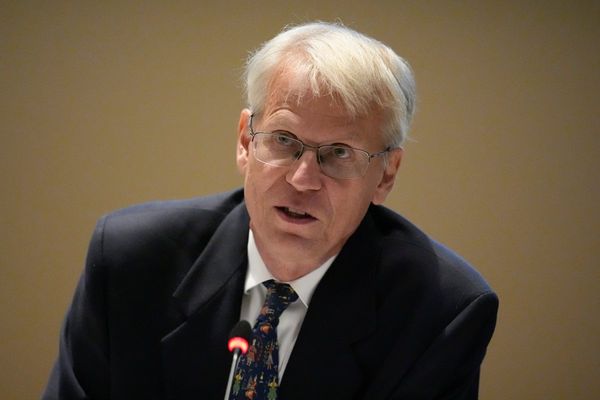
At the central bank conference in Jackson Hole on Friday, Federal Reserve Chair Jerome Powell warned that a new set of policy-driven shocks is reshaping the U.S. outlook, underscoring how “significantly higher tariffs” are remaking global trade while tighter immigration policy has produced an “abrupt slowdown in labor force growth.” He added that forthcoming changes in tax, spending, and regulatory policies could carry lasting consequences for productivity and growth, and that there is “significant uncertainty” about where those policies will land and how they will affect the economy.
Powell framed the challenge as partly structural rather than cyclical: changes in trade and immigration, he said, are moving both demand and supply, making it harder to separate temporary swings from trend shifts — an assessment that matters because monetary policy is well-suited to smoothing cycles, but “can do little to alter structural changes.”
Fresh data in the speech sketch a picture of a labor market that’s balanced for the wrong reasons. Payroll growth averaged just 35,000 per month over the past three months after sizable downward revisions to May and June; unemployment edged up to 4.2%; and quits, layoffs, the vacancy-to-unemployment ratio, and nominal wage growth have all softened. Crucially, Powell tied the slower labor-force growth directly to a sharp falloff in immigration, with participation slipping in recent months.
Output has downshifted as well. Real GDP growth slowed to an annualized 1.2% pace in the first half of 2025, roughly half of 2024’s 2.5% clip, with consumer spending doing most of the cooling. Powell noted that part of the moderation likely reflects slower potential growth, not just weaker demand — a nuance that complicates the Fed’s task of calibrating interest rates.
On inflation, Powell said higher tariffs are already lifting prices in some goods categories. He cited estimates showing total PCE inflation at 2.6% year-over-year in July, and core PCE at 2.9%, with core goods prices up 1.1% over 12 months after declining through 2024. Housing services inflation continues to cool, but nonhousing services remains somewhat too firm for comfort. Powell’s baseline case right now is that tariff effects could prove a one-time level shift rather than a renewed inflation spiral, though he cautioned that the timing and size of pass-throughs are uncertain and that tariff schedules are still evolving.
He also ran through the risk channels the Fed is watching: a wage-price dynamic if workers bargain to recoup tariff-driven real-income losses (which he called unlikely, given a cooling job market); and a drift higher in inflation expectations (which, for now, remain well-anchored on market and survey measures).
“Come what may,” Powell said, the Fed won’t allow a one-off price level shift to morph into an ongoing inflation problem.
Policy-wise, Powell emphasized a balancing act: with upside risks to inflation and downside risks to employment, the Fed’s framework requires weighing both sides of the dual mandate. He noted the policy rate is about 100 basis points closer to neutral than a year ago, and that officials can “proceed carefully” while keeping decisions strictly data-dependent, and not on any preset course.
Against that backdrop, Powell unveiled the results of the Fed’s five-year framework review and a revised Statement on Longer-Run Goals and Monetary Policy Strategy. Key changes include removing language that cast the effective lower bound as a defining feature of the landscape; returning to flexible inflation targeting (rather than the 2020 “makeup” approach); clarifying communications around maximum employment (dropping the “shortfalls” phrasing that had muddied pre-emption debates); and reaffirming the 2% inflation goal. The updated statement, he said, is meant to be robust across a wider range of conditions and will be reviewed publicly about every five years.
Longer-run, Powell allowed that the economy’s neutral interest rate may sit higher than in the 2010s, reflecting shifts in productivity, demographics, and fiscal policy, even as policy today remains restrictive. That backdrop, combined with policy-driven changes to trade and immigration, heightens uncertainty around the supply side and the speed limit of the economy.
The message out of Wyoming was ultimately one of cautious pragmatism: the Fed sees clear, policy-linked forces — tariffs and immigration — reshaping the inflation-employment trade-off, and it is tweaking its playbook to better navigate an economy where shocks may be more frequent and persistent. Until the data clarify whether these shocks are a blip or a new baseline, Powell signaled the central bank will move carefully, protect the hard-won anchoring of inflation expectations, and avoid policies that would needlessly imperil jobs.
On the date of publication, Caleb Naysmith did not have (either directly or indirectly) positions in any of the securities mentioned in this article. All information and data in this article is solely for informational purposes. For more information please view the Barchart Disclosure Policy here.






